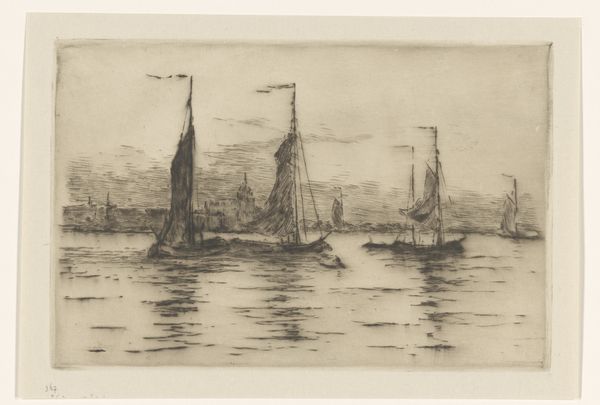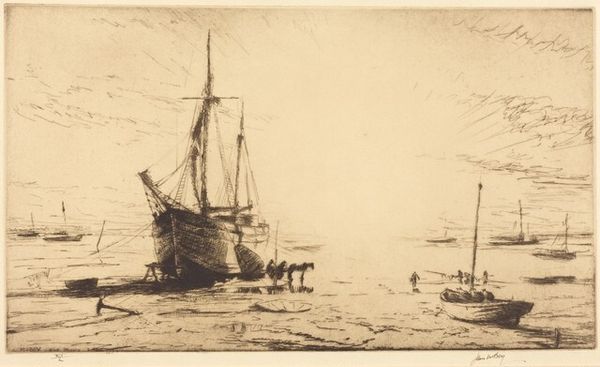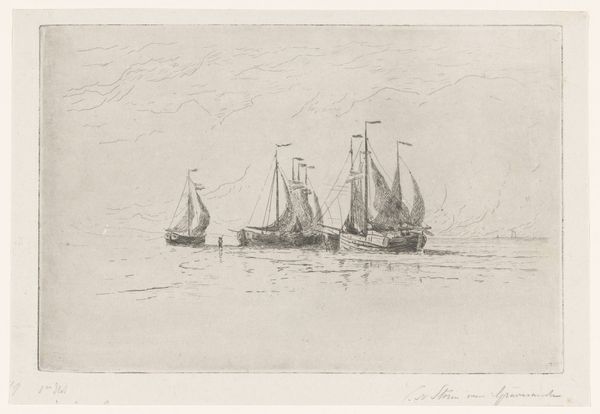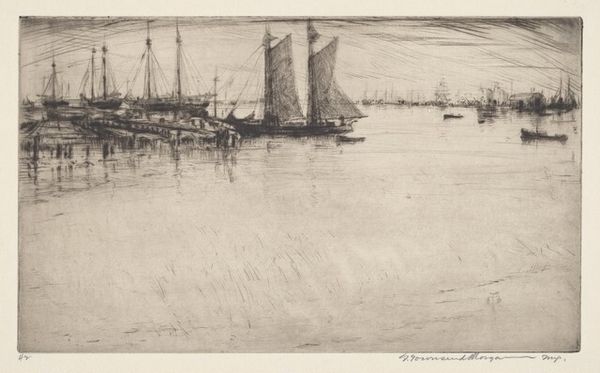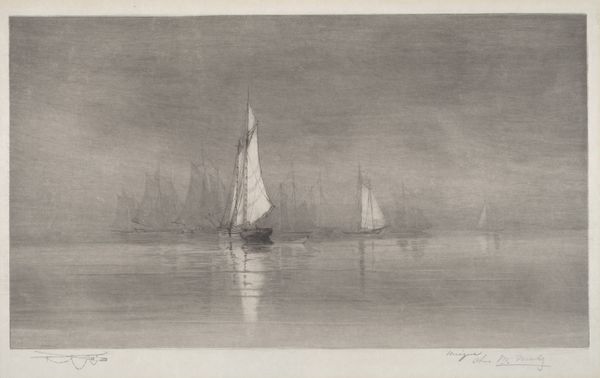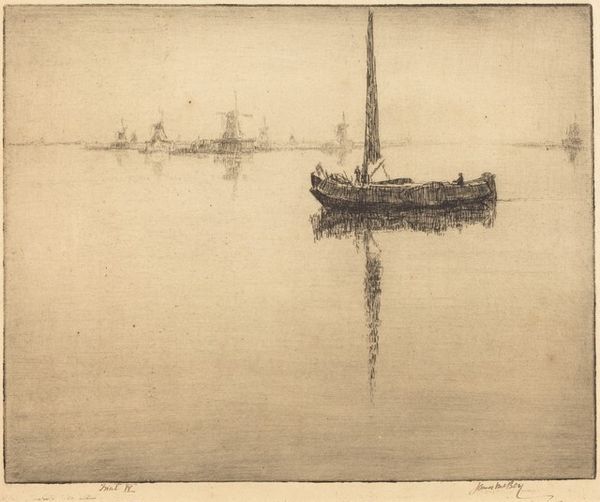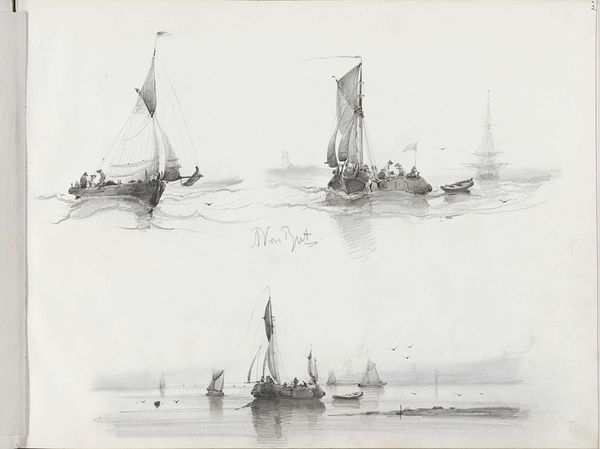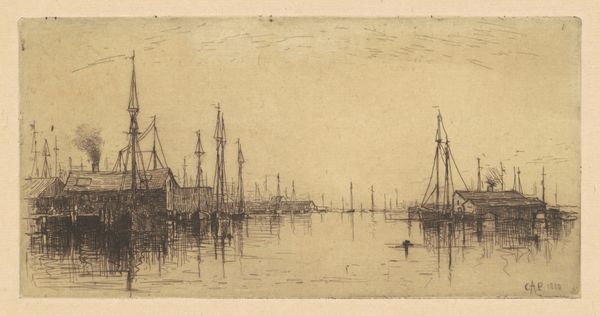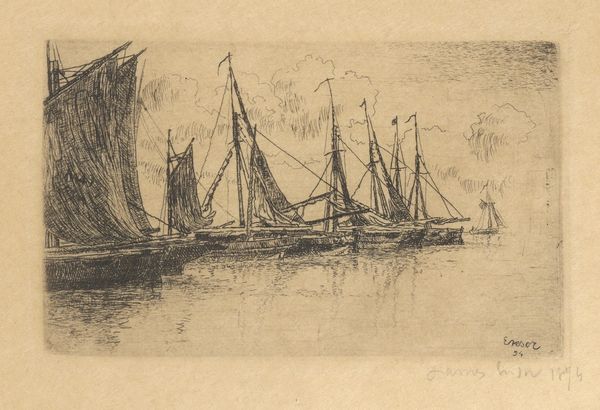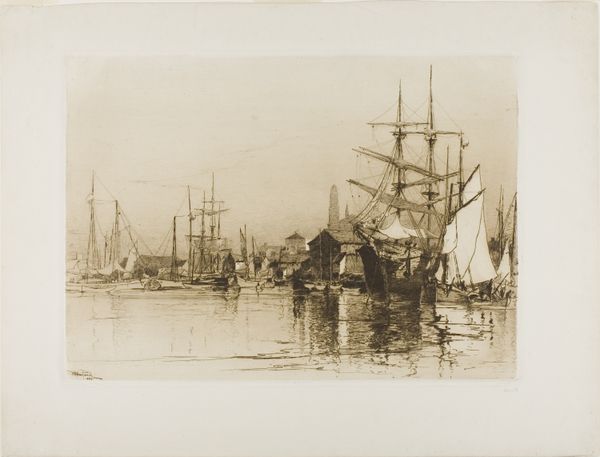
Copyright: National Gallery of Art: CC0 1.0
Editor: This is James McBey's etching, "The Ebb Tide," created between 1922 and 1923. The water and light create a really calming, almost hazy, effect. There are all these ships, some docked and some sailing away. What symbolic weight do you think those receding ships carry? Curator: The ebb tide itself is powerfully symbolic. Consider how the receding water reveals what was previously hidden – a potent metaphor for unveiling hidden truths or memories. And those ships? Think about the traditional symbolic charge of boats and ships: vessels of transition, passages into the unknown. Editor: So the title suggests that this image deals with revealing hidden truths or confronting the unknown? Curator: Potentially, yes. Note how McBey uses line – long, flowing strokes create the water, yet broken, almost hesitant lines depict the vessels themselves. This contrast creates a tension – a sense of both freedom in the open sea and fragility. Is there perhaps a subtle hint of existential questioning within what seems like a serene seascape? Consider as well the location, which feels deliberately nonspecific. It’s a placeless “anywhere” which gives it universality, no? Editor: I see what you mean! So rather than a simple scene, it evokes the universally human experience of change and uncertainty through very particular lines and composition choices. Curator: Exactly! The etching medium itself reinforces the transience. Like memory, etched lines are lasting yet delicate, prone to fading if not carefully preserved. Do you think McBey understood he was reflecting something about human condition? Editor: I didn't initially see those deeper connections, but understanding the cultural weight behind these symbols completely changes how I interpret this work! Thank you! Curator: My pleasure! Always keep your eye on the symbolic and allegorical!
Comments
No comments
Be the first to comment and join the conversation on the ultimate creative platform.
